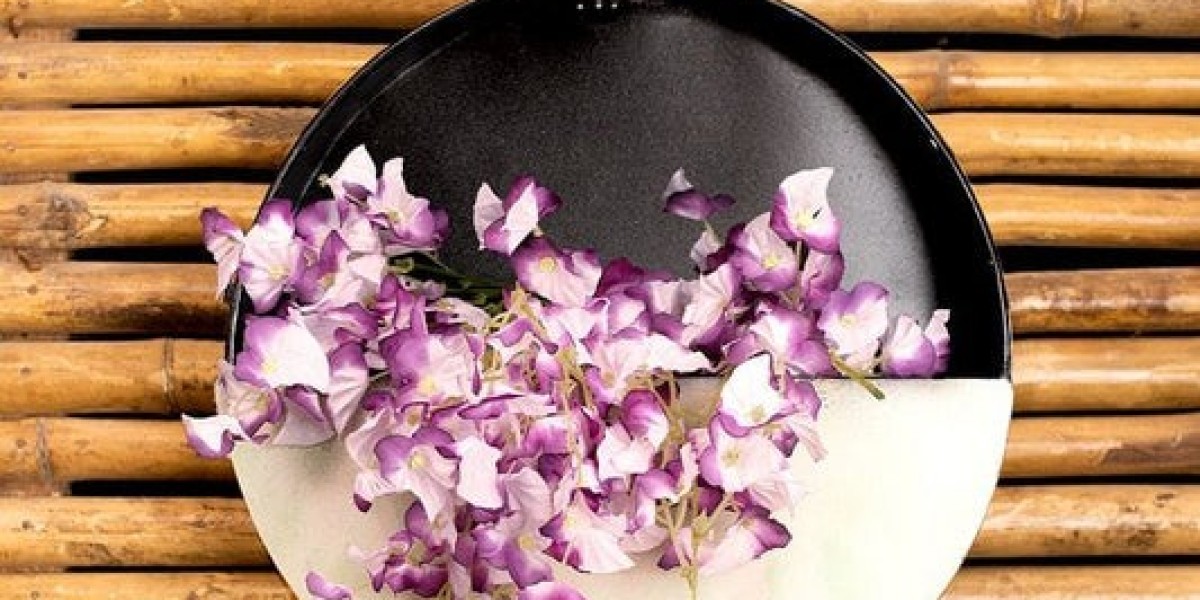A wall planter is a container designed to hold plants and hang them on a wall or fence. Wall planters can be made from various materials such as metal, wood, plastic, or ceramic and come in multiple sizes and shapes. They are famous for small-space gardening, particularly in cities with limited outdoor space.
Wall planters can be used to grow various plants such as herbs, succulents, flowers, and vegetables, as well as add a decorative element to any room or outdoor space. They also used to make a green wall, a beautiful and one-of-a-kind way to display plants.
Benefits of wall planters
Wall planters can be an excellent solution for small-space gardening as they take up little floor space. Wall planters can add a decorative element to any room or outdoor space. They also used to make a green wall, a beautiful and one-of-a-kind way to display plants.
Wall planters are easy to maintain as they are usually small and have limited soil capacity, making them less prone to overwatering and soil-borne diseases.
Plants in wall planters can help purify the air by removing harmful pollutants and releasing oxygen.
Wall planters can be hung at different heights, making them accessible for people with limited mobility or those who prefer not to bend down to tend to their plants.
Disadvantages of wall planters
Limited plant choices:- Wall planters have limited soil capacity, which can restrict the types of plants that can be grown in them. Plants with shallow roots and low water requirements are typically the best options.
Maintenance challenges:- Wall planters can be challenging to maintain, especially if installed in hard-to-reach areas or require frequent watering.
Water management:- Overwatering or poor drainage can lead to water damage and can be a concern when using wall planters.
Wall planters can be an excellent way to expand your gardening options, mainly if you have limited space or live in an urban area. They provide an opportunity to grow plants vertically, which can help maximize the available space's use. Furthermore, wall planters are used to create one-of-a-kind and beautiful plant displays, which can be a rewarding and enjoyable hobby.
History of wall planter
The history of wall planters dates back centuries to ancient civilizations such as the Babylonians and Romans, who used hanging gardens to create beautiful and functional green spaces. These early wall planters were often constructed of stone, brick, and clay and used irrigation systems to keep the plants watered.
During the Renaissance period in Europe, wall planters became widespread features of formal gardens, particularly in Italy and France. These gardens featured intricate designs and patterns, with plants arranged in geometric shapes and often clipped into topiary forms.
In the 19th and 20th centuries, wall planters became more common in urban areas, particularly in densely populated cities where outdoor space was at a premium. Architects and designers began incorporating wall planter into building facades and interior spaces, creating green walls and vertical gardens for aesthetic and functional purposes.
Today, wall planters are widely used in residential and commercial settings and are available in various styles, materials, and sizes. They continue to be a popular way to add greenery to indoor and outdoor spaces and are increasingly used as a sustainable design element in eco-friendly buildings and landscapes.
Wall planters can be a valuable addition to home gardening for several reasons:
Space-saving
Wall planters can be an excellent solution for small-space gardening, particularly in urban areas with limited outdoor space. They allow you to grow plants vertically, taking up less floor space.
Aesthetically pleasing
Wall planters can add a decorative element to any room or outdoor space. They also created a green wall, a unique and beautiful way to display plants.
Accessibility
Wall planters can be hung at different heights, making them accessible for people with limited mobility or those who prefer not to bend down to tend to their plants.
Improve air quality
Plants in wall planters can help purify the air by removing harmful pollutants and releasing oxygen. It can have a positive impact on your health and well-being.
Easy to maintain
Wall planters are easy to maintain as they are usually small and have limited soil capacity, making them less prone to overwatering and soil-borne diseases. They also provide easy access to watering and plant care.
Create a focal point
A wall planter used to create a focal point in your garden by showcasing a specific plant or group of plants. You can choose colorful flowers, fragrant herbs, or lush foliage to make a bold statement.
Add color and texture
Wall planters add color and texture to your garden. You can mix and match different plant varieties to create a vibrant and visually appealing display.
Soften hard surfaces
Wall planters use to soften the look of hard surfaces such as brick or concrete walls. They can add a natural element to your garden and create a more inviting and organic feel.
Incorporate greenery
Wall planters can help you incorporate more greenery into your garden, mainly if you have limited space for planting. They add layers of plants at different heights, which can help create a sense of depth and dimension in your garden.
Overall, wall planters are a versatile and practical way to incorporate plants into your home gardening efforts. They can be used to grow various plants, from herbs and succulents to flowers and vegetables, and can help create a beautiful and healthy living space.



